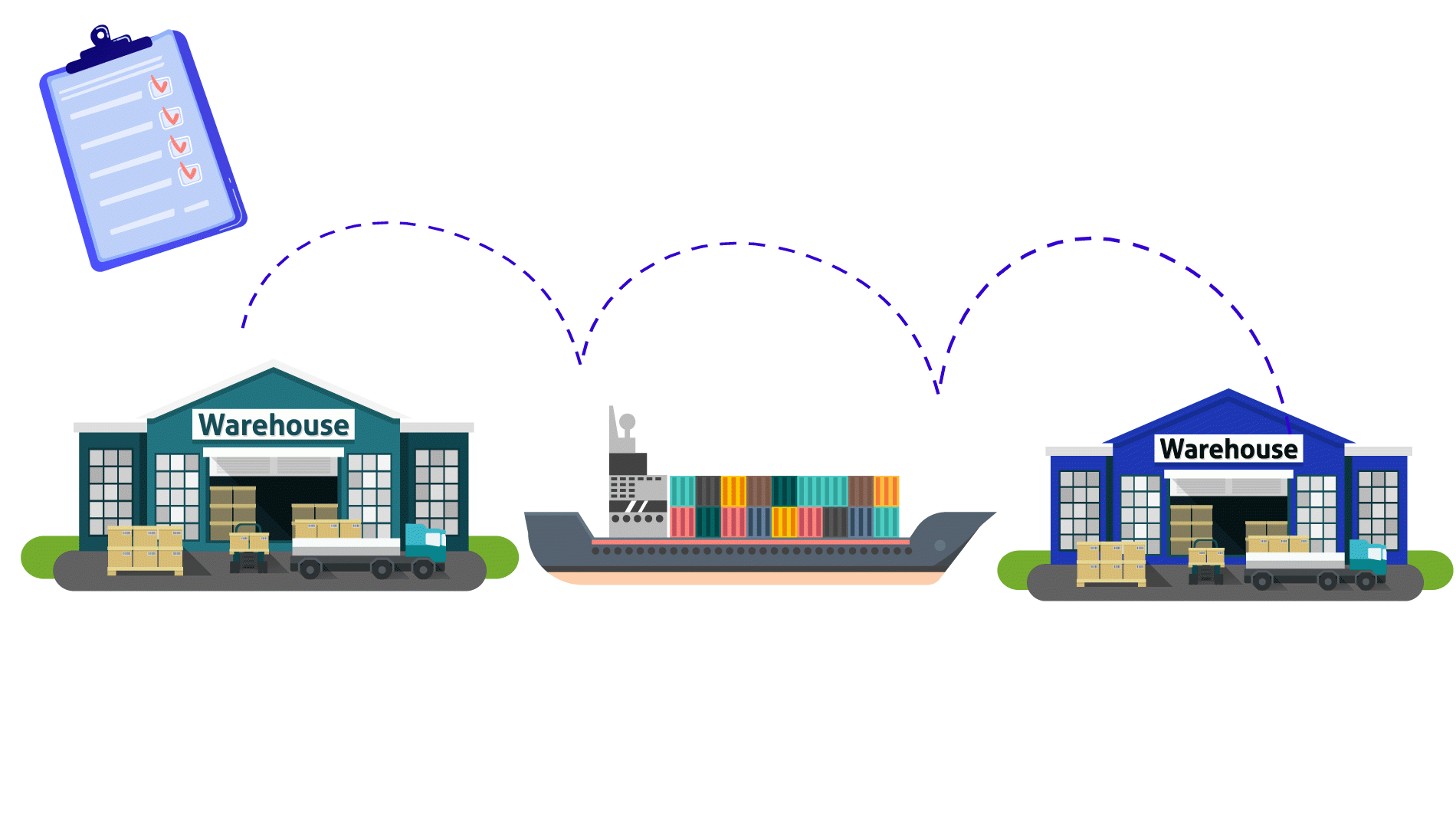
Even with good regulation, revolutionary changes are possible
Our economy would not exist without the transport and logistics sector. Within the sector, numerous agreements and documents are needed to make sure everything runs as smoothly as possible. Still, there is always room for improvement and the e-CMR (electronic consignment note) could well bring about a revolutionary change in the sector. What is an e-CMR and is it also on the agenda of Belgian and Luxembourg authorities? Read it here!
This time we had Rudy Hemeleers on the line for a look at this fascinating subject. Rudy is Strategy and Policy Advisor Transport and Logistics at 51Biz Luxembourg. He has years of experience in the field of transport and logistics and with 51biz he is working on Europe's e-CMR related projects. Who better than Rudy to tell us more about this evolution within the transport sector?

A chain of events
Let's start at the beginning. What is a CMR? It is a document that provides for an essential agreement between commercial companies when goods are transported from point A to point B. Among other things, this agreement specifies which and how many goods are involved, the conditions they must meet and that a transfer of ownership is involved. "The UNECE CMR convention is legally important in case of conflicts. It serves as a kind of track and trace of events with at least a sending and receiving event. If, for example, only nine out of ten boxes sent arrive, you have the CMR document as proof, which by the way is valid in commercial disputes" Rudy explains. It is also important in terms of invoicing and taxes (e.g. EU VAT). Keeping track of all the changes during transport, is sometimes not so easy. If you digitalise this process, you arrive at an electronic variant of the CMR, named the e-CMR. With an e-CMR everything runs much faster because it is digital and all information is on the spot available to every authorized party.
GS1, as a participant in the global data model that supports the convention, also has an important role in the CMR story,. The UN/CEFACT Buy-Ship-Pay data model shows the relationships between the various aspects of the transport, such as shipment, consignments, the customs declaration and the item numbers. This model is continuously synchronised with the customs services, making it a generic model.

The Benelux as pioneer for Europe
What is easy to remember is the difference between a CMR and an e-CMR. The e-CMR is actually the electronic variant of the CMR. "55 countries have signed the global convention for the CMR. This means that if there is a transport between two of those 55 countries, the carrier is obliged to use a CMR that is in conformity with the CMR convention", Rudy explains. "Of those 55 countries, 30 have signed the e-CMR convention, but Belgium has not yet endorsed it."
Nevertheless, Belgium has not dismissed the e-CMR. "Before Belgium would this convention, it wants to understand how they can trust and control an electronic document. To check this, a pilot project has been launched together with the Netherlands and Luxembourg since dec. 2017. " The project relies entirely on the UNECE e-CMR data model, but adds two important requirements for e-CMR IT service providers. Firstly, the transport document/data set must be stored on a system authorized by one of the 3 Benelux countries. In addition, the mandated control authorities must also have access to these e-CMR systems. The Benelux pilot project has not escaped European Commissions notice and is considered as a valuable basis for the current EU 2020/1056 e-FTI regulation.
The e-FTI regulation by Europe
Paperless controls related to road transport, inland shipping, air, rail, dangerous goods and waste without paper cargo information will become a reality as of 2025. Logistics companies will then be able to make freight information available to the government digitally. In August 2020, the European Electronic Freight Transport Information (e-FTI) regulation came into force. This regulation mandates EU member states to accept freight transport information in a electronic format as of 21 August 2025.
For logistics companies, there is (yet) no obligation to make data digitally available to the control services. However, it has been established that the parties who opt to provide data electronically must do so in a EU harmonised way via certified e-FTI platforms and services. In this way, companies and governments can be sure that the systems and data meet the quality requirements.
The period up to 2025 has been divided into two phases: a specification phase (2020-2023) in which, among other things, the functional and technical specifications for the e-FTI datasets, processes and platforms will be worked out and established, and a implementation phase (2023-2025) in which the e-FTI processes and IT facilities will be set up.
Will e-CMR/e-FTI become mandatory?
From 2025, European governments will be obliged to accept transport documents electronically. "Companies will still be able to use the paper version, but they will soon notice that the advantages of digital processes are also significant in the B2B environment. The Benelux e-CMR providers and their customers confirm this. A study of the Federation of Belgian enterprises and University of Hasselt (2019) outlines that a gain of € 13,11 can be accomplished by switching from paper to electronic documents. The goods can be tracked through a cloud environment (and linked data), so you know where your goods are at any moment", says Rudy. Moreover, it is planned that after a few years the European Commission will evaluate to make e-FTI regulation mandatory.
Economic operators keep control over their data (pull mechanism)
What is really revolutionary, according to Rudy, is that within the project the data owner keeps control over who has access to his data. "Because you keep the data at the source, an e-CMR/e-FTI data set can include digital references to other documents (linked data). This is where unique identifiers and therefore also GS1 play a role. This way a link can be made between the movements of the goods themselves and the related transport events." As an example, Rudy gives a container ship from Australia arriving in the port of Antwerp with 24,000 containers. All these containers actually have their own route, but they do have one thing in common. They all have a unique identifier. When linking transport events and shipment data, every party involved is informed when an event occurs: departure in the Australian port, arrival in the port of Antwerp and all other events within the route of each specific individual container. "The use of those unique IDs used to be a dream, but is a first step because the European initiatives (EU federated platform and e-FTI regulation) towards harmonized and secure sharing of trusted data," says Rudy.
There are still many challenges, but once these are overcome, the e-CMR/e-FTI initiatives promise to be a huge positive evolution within the transport and logistics sector. At GS1 Belgilux we will monitor these and other evolutions through our newly established Transport & Logistics knowledge centre that will provide our members with neutral & not-for-profit information on what is happening in this area. So, do not wait for 2025, but start exploring the new landscape and digital T&L processes today.



